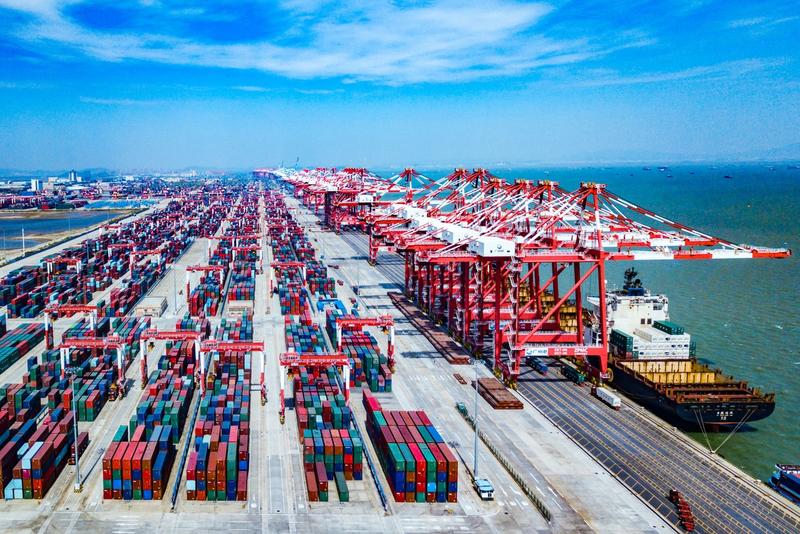FOCUS ON HOT SPOTS
International Tea Day | "How can people live in a world without Tea?"
Published:
2025-05-21
May 21st is International Tea Day. This was announced at the United Nations General Assembly at the end of 2019 to celebrate the economic, social and cultural value of tea. It is the first international festival in the agricultural field successfully promoted and established by tea-producing countries mainly led by China.
Tea is one of the world's three major beverages. There are now over 60 tea-producing countries and regions around the world. The tea output is nearly 6 million tons, the trade volume exceeds 2 million tons, and the tea-drinking population exceeds 2 billion. It is said that the reason for setting the "International Tea Day" on May 21st is that the main types of tea in China are green tea and black tea. By the middle and late May, most of the tea has already hit the market.
China is the hometown of tea. For thousands of years, tea tasting and drinking have been regarded as refined pleasures in life in China. Chinese tea culture originated in the Tang Dynasty. During the open, inclusive, confident and glorious Tang Dynasty, tea gradually entered various fields of national politics, economy and culture from a crop, forming a unique tea culture of the Tang Dynasty. It was also during the Tang Dynasty that Lu Yu, the tea sage, wrote "The Classic of Tea".
Looking back, when did we start drinking tea? Lu Yu said, "Tea as a drink originated from Shennong and became known to Duke of Zhou of Lu." The theory of Shennong is elusive and unverifiable. After Lu Yu, someone put forward a new viewpoint. In the "Shanfu Jingshou Lu" published during the reign of Emperor Xuanzong of the Tang Dynasty, it was proposed that "tea was not eaten in ancient times. Since the Jin and Song Dynasties, people in Wu have picked its leaves and cooked them to make tea porridge." During the Song, Yuan, Ming and Qing dynasties, some people, based on their own evidence, put forward various theories about the origin of tea drinking, such as The Three Kingdoms period, the Eastern Han Dynasty, the Qin and Han Dynasties, and the Pre-Qin period. This situation has persisted until now, with no consensus reached.
One more thing is certain: the character for "tea" only emerged in the Tang Dynasty. The "Kaiyuan Ziyin Yi" compiled during the reign of Emperor Xuanzong of Tang first simplified the character "荼" to "茶". Before the Tang Dynasty, the character "荼" had the meaning of tea, but it also had the meanings of bitter vegetables and thatch. To distinguish them, the character "茶" was created. This character was further developed and became an official standard due to Lu Yu's "The Classic of Tea".
Why drink tea? Some scholars have studied that tea was once a master detoxifying agent in ancient times and was a kind of medicine. Later, it was transformed into food and became a drink. Many people drink tea to stay alert. As a "business card" for interpersonal communication, tea tasting helps establish deep connections and also serves a social function.
It is well documented that Europeans began to drink tea around the early 17th century, as tea entered Europe during that period. With Princess Catherine marrying into the United Kingdom, drinking tea began to become popular among the royal family. By the 19th century, tea had become a common agricultural product and ordinary British people could also drink tea.
The Beatles in the UK has a song that goes: Dear Rita, I'd like to ask you, when are you free to have tea with me?
Former British Prime Minister William Gladstone once wrote a poem: If you feel cold, tea will warm you up. If you have a fever, tea will cool you down. If you are depressed, tea will cheer you up. If you are excited, tea will calm you down.
The British poet Coleridge also wrote a tea poem: It's hard to imagine a world without tea - how could people live!
It is reported that Britons consume about 70 billion cups of tea a year . According to a survey by the Tea Brewing Association, 70 billion cups of tea are consumed in the UK each year, which means 1,029 cups per person per year for about 68 million people in the UK, or 2.8 cups per day .
But when it comes to the consumption of tea, the British cannot rank first. According to data from the Turkish Statistics Institute, the annual per capita tea consumption in Turkey exceeds 3 kilograms, far exceeding that of the British. The Black Sea region is the core area for tea production in Turkey, especially the Rize Province. Since the middle of the 20th century, this region has produced the majority of the country's tea.
Turkish tea was introduced from China along the Silk Road in the 5th century AD. The word "tea" in Turkish is also similar to the pronunciation of "tea" in ancient Chinese. By the 6th century, tea drinking had evolved from a medicinal practice into a popular drink. By the middle of the 20th century, tea had become the most popular drink throughout Turkey, and this trend has continued to this day.








